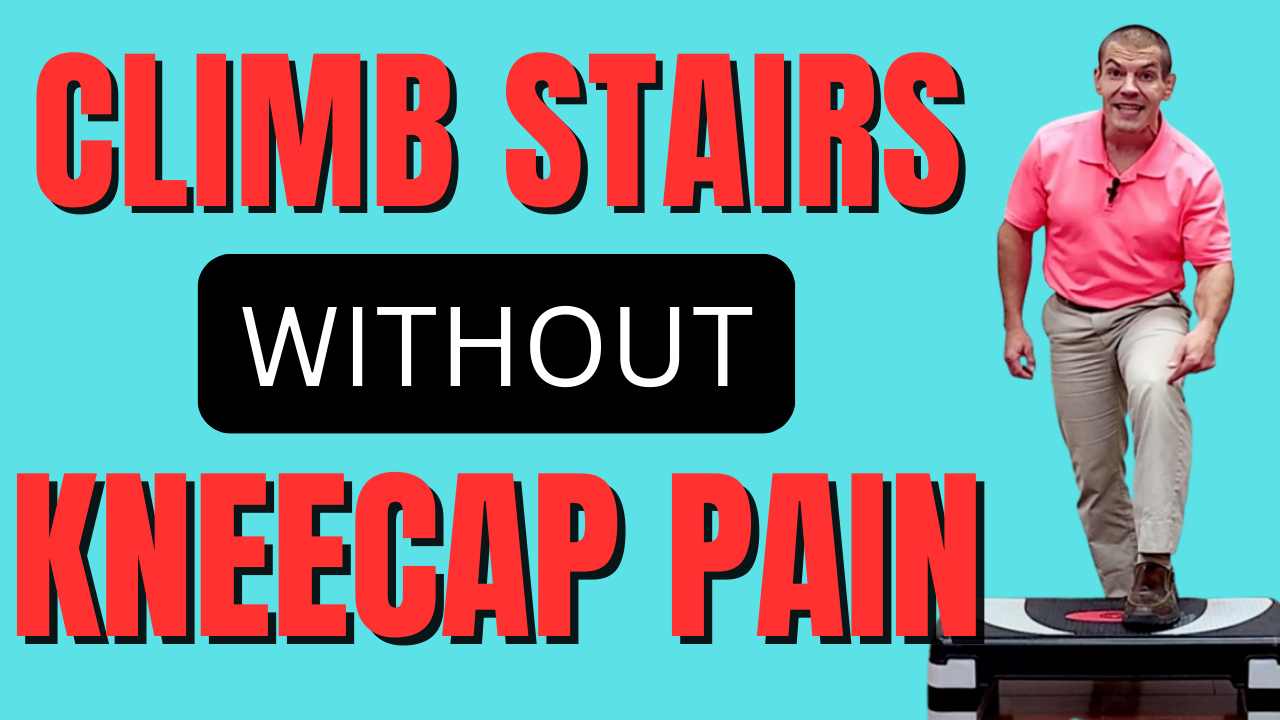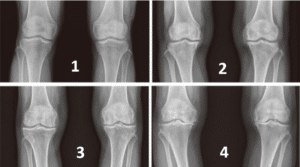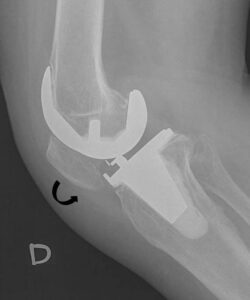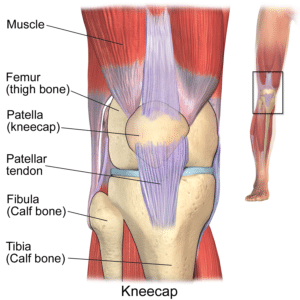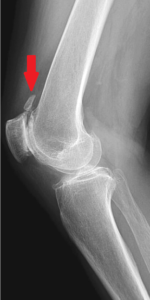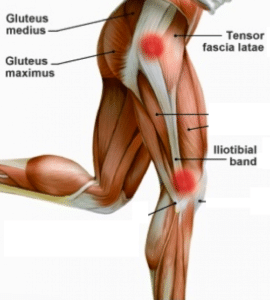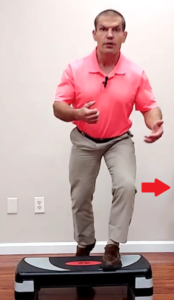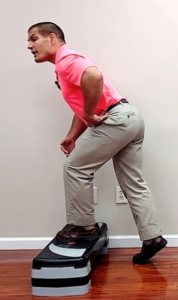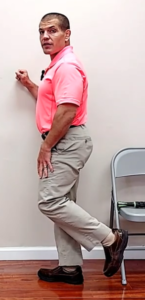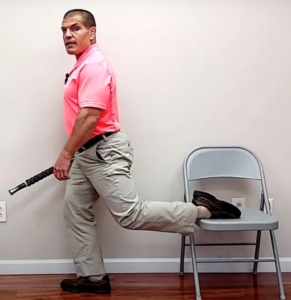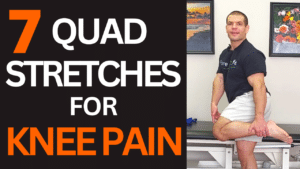Do You Get Kneecap Pain Walking Upstairs?
Walking upstairs is one of the most painful things for people with kneecap arthritis (a.k.a patellofemoral degenerative arthritis). Watch this video and read the post below to learn:
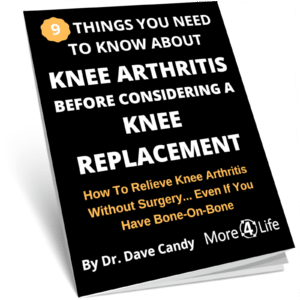
What Is Patellofemoral Degenerative Arthritis?
Patellofemoral degenerative arthritis is a medical term for osteoarthritis or the kneecap. It's the most common form of kneecap arthritis.
However kneecap arthritis can be confusing because it goes by many different names:
- Patellofemoral degenerative arthritis
- Patellofemoral arthritis
- Chondromalacia patella
- Patellofemoral pain syndrome
- or just "kneecap pain"
Regardless of what name or label gets slapped on it though, these are all more or less different names for the same problem.
Just because you have kneecap arthritis doesn't mean you'll need a knee replacement though.
You see, kneecap arthritis is different than the type of arthritis that people typically get joint replacements for.
Usually people get knee joint replacement because of cartilage loss in the tibiofemoral joint. The tibiofemoral joint is the joint between the thigh and the lower leg.
You can see the different grades of tibiofemoral knee arthritis in the image below.
When you get to grade 4, that's when it may be time to consider a knee replacement.
However, patellofemoral degenerative arthritis affects the joint between your kneecap (patella) and your thigh bone (femur).
You can see this joint on a "sunrise view" x-ray.
Unlike the tibiofemoral joint, this joint is not a weightbearing joint.
Additionally, the patella does not get replaced during a knee replacement.
Sometimes the underside of the patella will get re-surfaced during the operation, but not always. And many people do have persistent kneecap pain after knee replacement surgery.
So even if you do have patellofemoral degenerative arthritis, having a knee replacement may not be the best option.
3 Common Causes Of Kneecap Pain Walking Up Stairs
Even if you have kneecap arthritis, that doesn't necessarily mean that you'll have kneecap pain walking up stairs.
The 3 things that typically cause kneecap arthritis to hurt when you're going up and down stairs are:
- stiffness in your thigh (quadriceps) muscles
- overuse of your quadricep muscles
- IT band stiffness
Stiff quadriceps muscles
Your kneecap sits inside your quadriceps muscles.
Therefore, if your quadriceps muscles are stiff, you may notice kneecap pain walking up stairs.
You may also notice that you get kneecap pain when you're sitting in a chair for long periods of time.
Or, you may get kneecap pain at night when you're sleeping with your knees bent.
That happens because as you bend your knee, your quadriceps muscles have to stretch. However, if your quadriceps can't stretch enough, that creates more compression of your kneecap up against your thigh bone.
Overuse of quadriceps muscles walking up stairs
If you overuse your quadricep muscles instead of using your glutes when you're going upstairs or when you're squatting, you may notice a sharp, stabbing pain above the kneecap or below the kneecap.
That's more of a tendinous problem: either quadriceps tendinopathy (above kneecap) or patellar tendinopathy (below kneecap).
However, if you happen to have patellofemoral arthritis on your x-ray, you might mistake the tendon pain near the kneecap for patellofemoral arthritis pain.
Sometimes you can actually even develop bone spurs above the kneecap if you chronically overuse your quadriceps.
If you see a bone spur like the one above on your x-ray, that's a sign that you may be overusing your quadriceps when walking up stairs.
Kneecap pain from IT band stiffness
When you walk upstairs, if you have weakness in your hip muscles it causes the femur to move inwards.
However, your IT band, a long tendon that runs down the outside of your thigh, it has some attachments into the kneecap.
Therefore, the IT band can pull the kneecap to the outside while the thigh bone goes inwards. This causes the kneecaps to get misaligned in the femoral groove.
That in turn can cause pain on the outside of the kneecap.
4 Tips To Relieve Kneecap Pain Walking Up Stairs
1. Turning your knee out when walking up stairs
If you have outer kneecap pain walking up stairs or when you're squatting, paying attention to keeping your knee turned slightly outwards when you're going up the stairs can help quite a bit.
You don't have to turn out excessively, but if you think about turning your knee outwards and you have a tendency to go inwards, you'll probably end up your knee in just about in the right spot.
2. Putting your whole foot on the stair
When walking up stairs, many people tend to just put their forefoot on the stair and push off their toes.
However, doing this uses your quadriceps to push you up the stairs and you don't use your glutes very much.
Conversely, when you put your whole foot on the stair, you can push off your heel, which utilizes your glutes more.
3. Lean forward when walking up stairs
If you stand with your trunk upright when walking up stairs, the horizontal length between your knee joint and your center of gravity is approximately the length of your femur.
However, if you lean forward when walking up stairs, this brings your center of gravity closer to your knee joint and therefore reduces the level arm.
If you remember from physics:
Torque = Force x Lever Arm
So if you decrease the lever arm, you decrease how much gravitational torque you need to overcome to lift your bodyweight up the stair.
4. Step through the stair
Rather than just focusing on stepping up onto the next stair, think about stepping through the stair and towards the next one. This allows you to utilize momentum as you're walking up the stairs.
So combining those tips: Place your whole foot on the stair, turn your knee outward, lean your trunk forward and then push through your heel, to step up and through the stair.
Ding this creates less compression on the patellofemoral joint when walking up stairs.
Eventually though, you do want to address the things that are causing that compression in the first place.
5 Exercises To Relieve Patellofemoral Arthritis Pain
Strengthening your glutes is important to avoid overusing your quadriceps. Here are two exercises to help you strengthen your quadriceps.
1. Step-ups (front and/or sideways)
Stand facing up the stairs or sideways on the bottom stair.
Lean forward slightly and push though your heel while turning your knee out as mentioned above. This is a really good, functional exercise because it exactly mimics the activity that you want to do.
If you can't go up a step without pain, using a phone book or a small aerobic step is a good starting point.
BalanceFrom 31-Inch Lightweight Portable...
$34.99 (as of July 26, 2024 10:45 GMT -05:00 - More infoProduct prices and availability are accurate as of the date/time indicated and are subject to change. Any price and availability information displayed on [relevant Amazon Site(s), as applicable] at the time of purchase will apply to the purchase of this product.)2. Lunges
Doing lunges is another great way to strengthen your glutes. However, some people get knee pain when doing lunges.
Click the image below to read my post on how to do lunges without kneecap pain.
3. Massaging your quad muscles
In addition to strengthening your glutes, it's also a good idea to improve the flexibility of your quadriceps muscles.
However, stretching stiff quadriceps muscles can increase the compression at your patellofemoral joint. Therefore, if you have knee pain, it's a good idea to massage your quad muscles with a muscle massage stick before stretching.
This isn't an "exercise" per se, but it is helpful
Make sure to roll the top, inside, and outside of your quad muscles.
Idson Muscle Roller Stick for Athletes- ...
$9.15 (as of July 26, 2024 17:22 GMT -05:00 - More infoProduct prices and availability are accurate as of the date/time indicated and are subject to change. Any price and availability information displayed on [relevant Amazon Site(s), as applicable] at the time of purchase will apply to the purchase of this product.)4. Standing knee bending
There several ways to stretch your quads, but one really important point is you don't want to stretch aggressively when you have kneecap arthritis.
Stretching too hard just increases the patellofemoral compression force behind your kneecap. This can cause pain when bending your knee.
So one way to stretch your quads is to do an active stretch where you stand holding onto something for balance. Then bend your knee just through the range that feels easy to do.
If you bend your knee just through what feels easy to do, you're not going to create excessive compression on your kneecap.
So just do what feels easy to do and do a lot of repetitions: 30 repetitions or more.
Standing quad stretch with foot on chair
Another option is to stand facing away from a chair. Bend your knee and place the top of your foot on the chair so you feel a gentle stretch in the front or your thigh.
Again, don't bend to the point where you start having kneecap pain.
If neither of these works for you, then check out this other post about 7 ways to stretch your quadricep muscles.
Conclusion
So in review, kneecap pain walking up stairs can be causes by stiffness in the quadriceps or IT band, or by weak glute muscles.
To walk up stairs without knee pain, focus on putting your whole foot on the stair, turning your knee out, leaning your trunk forward, pushing through your heel, and up and through the next step.
Finally, strengthening your glutes, massaging your quad muscles, and stretching your quad muscles can help fix the muscles imablance that cause you to have kneecap pain walking up stairs.
Need Help For Kneecap Pain?
If you live in the St. Louis area and need more help for kneecap pain or kneecap arthritis, we'd be happy to help you here at More 4 Life.
Just tap the button below to request an appointment with one of our specialist physical therapists.

